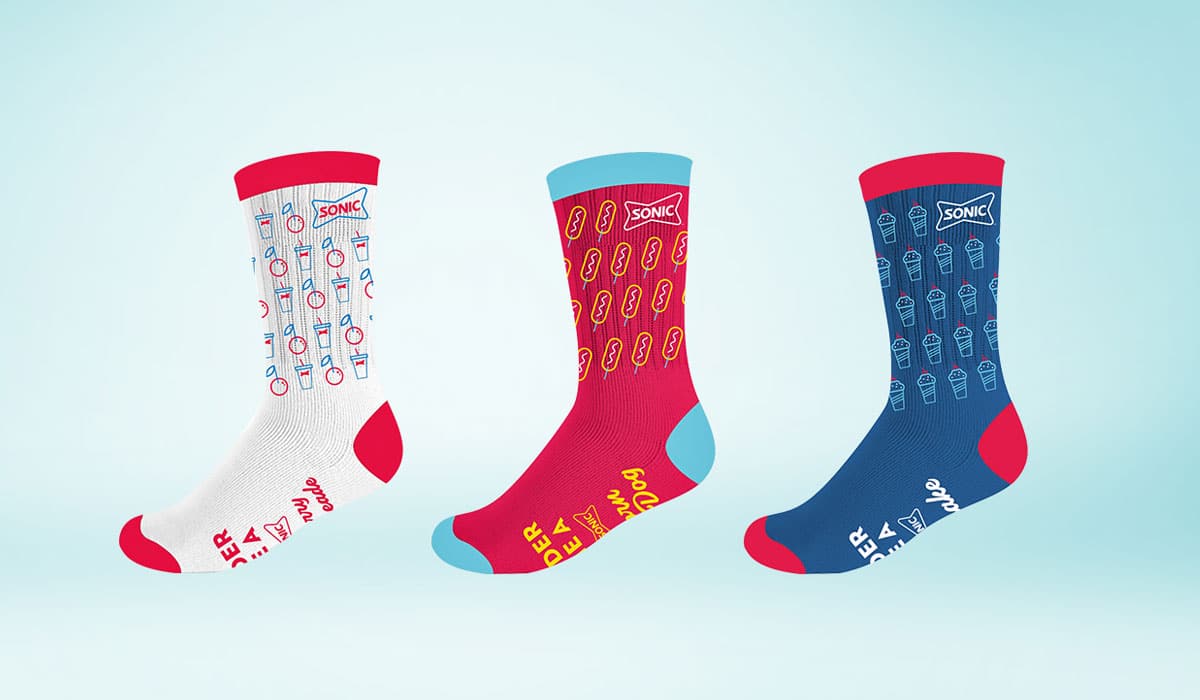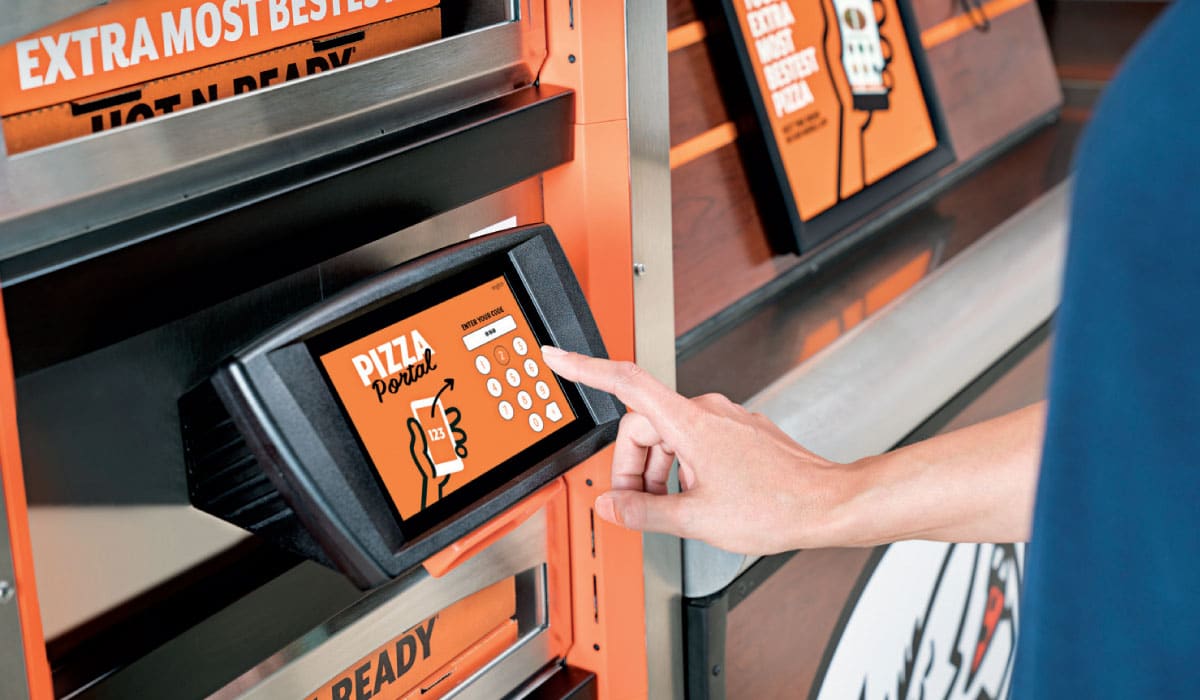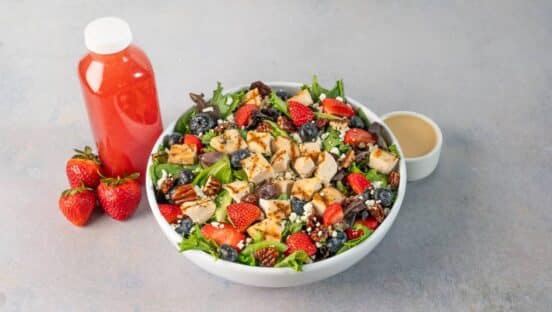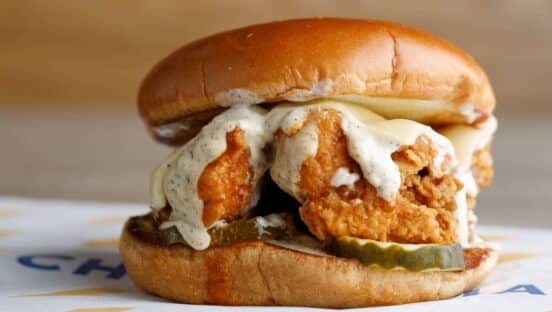Enforcing mask-wearing among employees and customers, social distancing, reducing capacity in restaurants, and maintaining an ultra-clean and sanitized restaurant are the new rules that restaurant operators are living by. Many restaurants and industry partners are going above and beyond these new standards to not only slow and stop the spread of COVID-19, but also to meet safety expectations that consumers will no doubt carry with them even after the pandemic.
While the last year has been tragic for so many in the restaurant industry, COVID has also offered restaurants an opportunity to make the best of things—and in many cases, that’s led to unparalleled creativity. Those that rose to the challenge have created solutions that will likely stick around for years.
Just look at Your Pie, a pizza fast casual with more than 75 locations. The brand added Take & Make and Take & Bake options last April to help customers eat at home more. Take & Make has proved the most popular and gives guests dough balls, cheese, customized toppings, and sauce in one box so they can toss their own dough and cook it at home.
“Everyone’s kids were home, so this not only kept people safe, but it also entertains them and keeps everyone occupied for a bit,” says Ashley Williams, the company’s director of training.
The Take & Make and Take & Bake options are available for contactless curbside pickup—an unfamiliar term just a year ago, but one example of a smart commitment to safety moving forward.
Here are three components of the restaurant industry that have been drastically changed to accommodate safety in a post-pandemic world.
[image source_ID=”129268″]
1. Off-premises strategy
A whopping 67 percent of operators have added curbside pickup since the beginning of the COVID-19 pandemic, according to a survey of 3,500 restaurant operators conducted by the National Restaurant Association. On top of that, 27 percent added third-party delivery and 17 percent introduced in-house delivery. And almost all of them plan to continue these offerings when the pandemic is over.
These additional measures to keep staff and customers safe has meant significant changes in restaurants’ operations and design to better facilitate an off-premises experience.
Early last summer in downtown Toronto, Paramount Fine Foods opened Box’d, a contactless, Mediterranean-inspired quick serve. Box’d has no seating and no contact between customers and employees. Guests order their food remotely, then pick it up at a designated time from one of 18 glass cubbies that separate Box’d’s front of house from the back.
The front of house is monitored by a concierge who sanitizes each cubby after use. At Paramount’s other locations, food for pickup is set out on a table, “which was very sterile, but with Box’d it’s fun,” says Karalyn White, the brand’s executive director of corporate affairs. The cubbies are nice to look at, with fun rotating inspirational pictures and phrases on the doors. “It all blends together to make a great guest experience,” she adds.
Little Caesars has been offering contactless pickup since 2018, when it launched Reserve-N-Ready, which allows customers to order remotely and then pick up their food from a Pizza Portal—kiosks that customers can open with a QR code on their phone to collect their food.
“Having the Pizza Portal during the pandemic has kept both customers and workers safe, as it’s a non-contact way for orders to be picked up,” says Craig Sherwood, vice president of U.S. development for the Detroit-based brand.
There’s no downside to this, he adds. Customers love the ability to order ahead and customize their order, which in turn drives business because of the convenience of ordering ahead and having food ready at a designated time. “It’s also helping drive ticket averages, because people tend to spend more when ordering online,” Sherwood says. It also helps minimize consumer-facing staff, meaning the labor force can be reduced or more workers can be focused on food preparation.
Little Caesars units typically have one to four Pizza Portals that fit 18 boxes apiece. They’re the first thing customers see when they enter a store, and they keep employees and customers separated, and, therefore, safer. Moving ahead, Sherwood says, “this will probably become a bigger part of our business.”

2. Branding
In the past year, most restaurants have been forced to make more changes to their operations than they ever anticipated, while also following ever-changing rules and advice, keeping their customers updated, and maintaining a level of trust with those consumers.
While less important than customer safety, maintaining a firm brand through these difficult times is critical, says Joseph Szala, principal and strategist at Vigor, a restaurant branding agency in Atlanta. So is weaving together branding and a commitment to safety. As such, any messaging about safety should fit within the brand identity while also being clear and hard to miss. For example, he says, floor stickers marking 6-foot distancing don’t do much good if they blend into the space too much. “Follow your brand’s identity, but look for the highest contrast possible with regard to color,” he says.
He points to the example of Hardee’s/Carl’s Jr.’s star logo, which would work well as 6-foot-apart floor stickers.
Consistency is the best way to gain trust from guests around safety and build your brand, says Margot Bloomstein, principal at Appropriate Inc., a brand and content strategy consultancy in Boston. “Your patrons have to have confidence in what you’re doing, so make sure everyone, from the back of house to delivery drivers, all know your standards for things like mask wearing, patio pickups, and cleaning, so they can communicate those standards,” she says.
She adds that, if they haven’t already, restaurants should update their websites and social media to show the updated reality of people wearing masks and social distancing to demonstrate safety measures. They might also consider including a short video to show customers how pickup works in a typical restaurant.
Above all, operators should be transparent, she says. “Speak in detail of what you’re doing beyond the hygiene theater of what they can see,” Bloomstein says. “Tell them how you’re keeping the air clean—opening windows, installing new HVAC systems, limiting people inside. Let that information be known on your website or your social platform.”
She adds that it should be the same message across all channels, and that restaurants should be OK with taking a serious tone, because everyone’s aware this is a serious topic.
Szala also believes this is no moment for restaurants to get cutesy. “Brands must be careful to project a serious tone of voice when discussing their approach to safety,” he says. “Even if it’s traditionally whimsical or offbeat, customer safety is no laughing matter. Serious doesn’t have to mean dire or forlorn. It can be casual, but clear.” To reinforce their branding, Szala adds, restaurants should consider using visuals.
What’s important with the messaging is that it’s one cohesive strategy across all channels. “Consistency is an indicator of believability,” Szala says. “If messages wobble in tone, verbiage, and visuals, it seems as if the brand hasn’t truly taken the efforts seriously enough.”
3. Technology
In the wake of COVID-19, vendors rushed to provide operators with the necessary tools for keeping restaurants clean and minimizing the risk of spreading the virus.
Envysion is one such vendor. The video surveillance company added a new audit, Health and Hygiene, to its suite, so operators could monitor metrics such as mask and glove compliance, social distancing, food safety, and restaurant cleanliness.
“We seem to find noncompliance everywhere, but mostly during down time when customers aren’t around,” says Laura Veeder, one of the company’s auditors. “With COVID, we see masks come off when there aren’t customers inside.”
Restaurant owners or managers can track their restaurant’s compliance scores on a dashboard or can pay extra for an auditing service from Envysion. Complying restaurants can display decals at their entrances and drive thrus, in order to give customers peace of mind, says Cara Grimsley, marketing events manager. “It’s designed to catch people’s eye and tells you the things we’re auditing for,” she says.
Other technologies are helping operators keep on top of the safety processes in their restaurants. Savvy Food Safety, a food-safety consulting corporation, is planning to soon launch TracSavvy, software that will allow restaurants to manage required food-safety certifications and avoid food-code violations. It will help restaurants and chains to ensure every staff member is up to date in their training, which is more essential than ever in a COVID-19 world.
Certifications include food handling and food allergies, but any can be added, says CEO Francine Shaw. And if certifications are expiring, the system will send out alerts to the person monitoring it.
Of course, adding new contactless ordering and payment technologies for customers quickly became a great way for operators to ensure safety during the pandemic.
David Guas, owner of Bayou Bakery in Arlington, Virginia, was one of the countless operators who worked with their POS providers—in his case Toast—to launch more ordering and payment options to customers. Guests can place orders from outside the restaurant and then pick up their food curbside or in the restaurant. Only 15–20 percent pick up curbside, he says. “The majority do still come inside, but may opt to pre-order with Toast to minimize either time inside or time waiting. Toast also allows customers to pay via their mobile device, also meaning less time with an employee and the exchanging of credit cards.”












